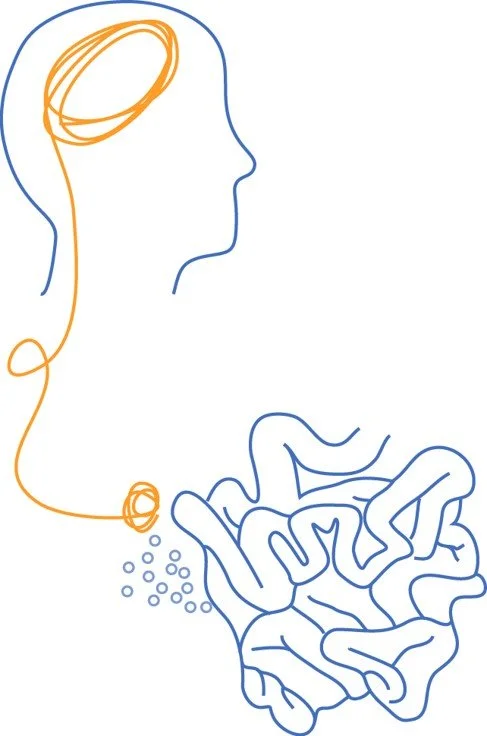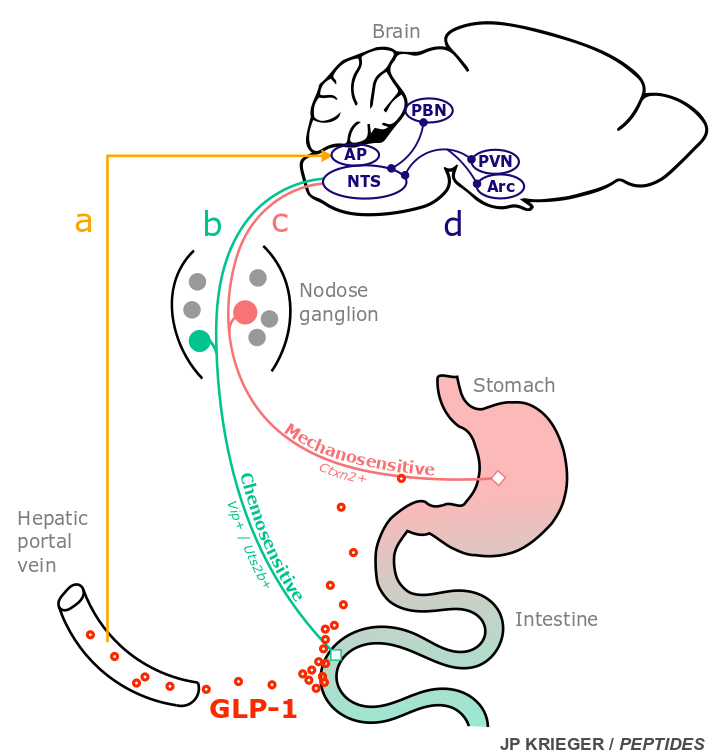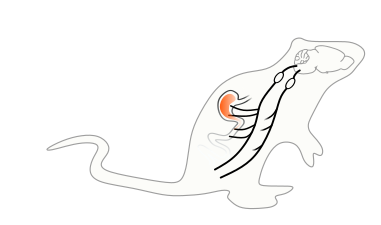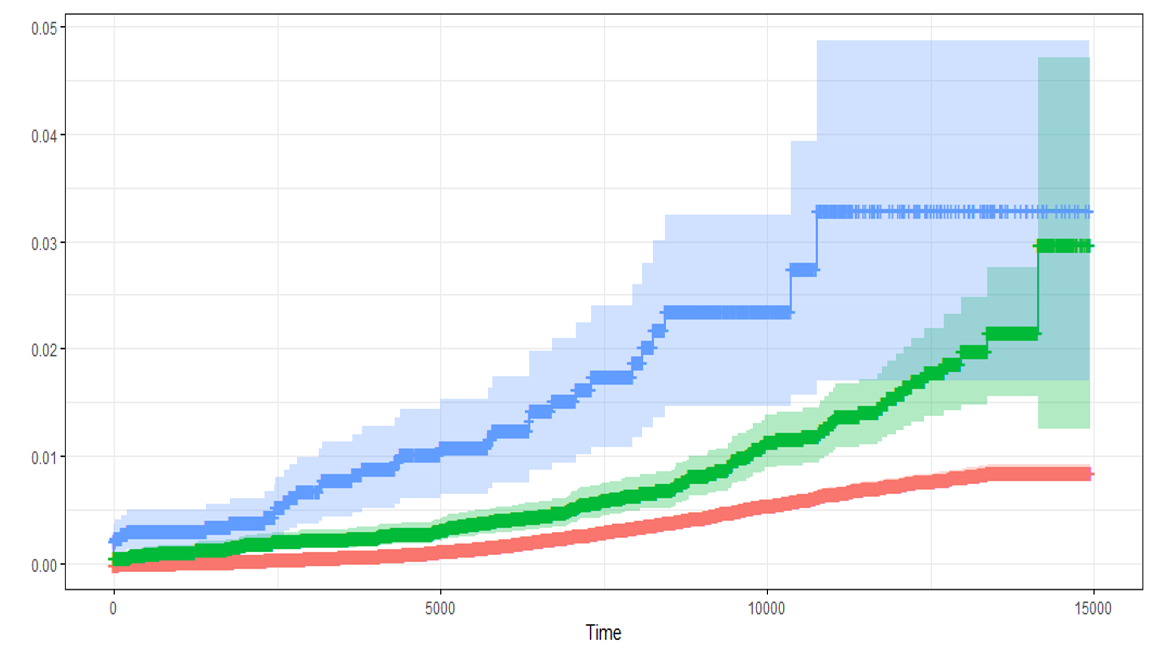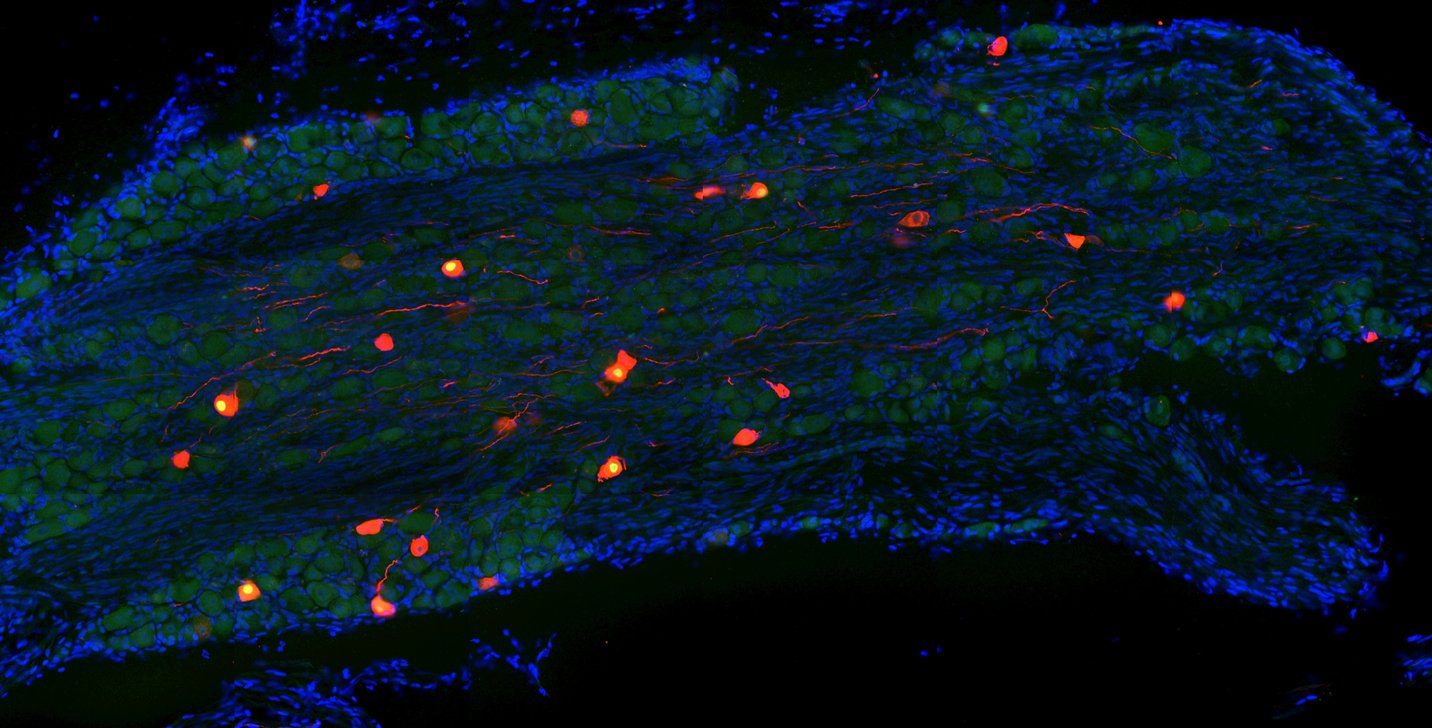
OUR RESEARCH
OUR GOAL
The overarching goal of our research group is to delineate how gut-brain communication, notably via the vagus nerve, contributes to the control of metabolism and behavior. With this research, we expect to identify novel risk factors and to design innovative treatments for metabolic and mental disorders.
Our focus
The vagus nerve is a long structure that wanders from the base of the brain down to the viscera. Along the way, it touches many other organs, including the gut. Within the vagus nerve, long sensory neurons called “vagal afferent neurons” can sense signals generated in the gut and send these signals to the brain.
Classically, vagal afferent neurons are known to play a crucial role in the control of appetite. Their stimulation by gut hormones and stretch informs the brain that we have eaten sufficient food, thus generating a sensation of fullness.
Recently, however, rodent studies implicated vagal afferent neurons in many additional functions, including memory, food reward and anxiety.
OUR QUESTIONS
Which metabolic and behavioral functions are influenced by vagal gut-brain communication?
What are the underlying neuronal circuits?
How do physiological or disease states affect gut-brain communication?
Is a failure in gut-brain communication a risk factor for metabolic and mental disorders?
OUR APPROACHES
Our group uses two complementary approaches:
1/ We conduct neuroscience studies in rodents. Our group uses unique manipulations of vagal circuits (selective lesions, chemogenetic, optogenetic) and combines them with cutting-edge metabolic and behavioral assessments. We use circuit mapping, transcriptomics and fibre photometry to investigate the central relays of vagal inputs.
2/ We conduct epidemiological studies in Human cohorts. Our group notably uses nationwide cohorts to detect associations between the (dys)function of the vagus nerve and metabolic or mental disorders. We therefore assess the relevance of our preclinical findings in Humans and test the hypothesis that gut-brain communication is an underestimated risk factor for multiple diseases.

